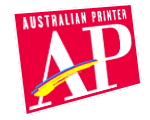Tags:
Creo has announced that it has installed a Lotem 800 II thermal CTP system at one of the world’s most holiest sites, the Vatican. The Vatican Press represents hundreds of years in printing history. Just yards away from St. Peter’s Basilica, the Vatican Press was founded in 1587 by Pope Sixtus V. Completely renovated in 1991 by the will of Pope John Paul II, the plant features state-of-the-art printing technology, including the new Creo solution.The Vatican Press is responsible for the composition and printing of papal decretals, curial documents, and official Vatican documents in twelve different languages. It also produces publications and products in many different sizes, such as posters, information booklets, magazines, commercial flyers for congregations and government agencies, as well as art books for the Vatican library and Vatican museums. The Vatican Press also prints L’Osservatore Romano, the daily newspaper of the Vatican City.
The search for a machine capable of meeting the unique needs of the Vatican Press was very thorough. Publications produced by the Vatican Press represent delicate religious issues and themes, and ultimately reflect the image of the papal office. The quality of each printed item is carefully examined, right down to slightest detail. The quality must also be consistent throughout the job.
In addition, their role as official provider of print services for the Holy See means that the Vatican Press is often confronted with unexpected high-volume jobs that need to be delivered within a tight schedule, but must also be of the highest quality. These jobs are given priority over any other scheduled jobs, and must be completed without affecting overall production.
To cope with these requirements, the Vatican Press turned to the automated, high-speed Creo Lotem 800 II Quantum CTP device. The platesetter’s multi-cassette unit supports a number of plate sizes used in the pressroom-35x50, 50x70, 62.7x89, and 70x100, as well as an inline processor. Each of the five cassettes holds up to 100 plates, and features automated slip sheet removal. Plates can also be loaded during device operation.
The Lotem platesetter’s output capacity of 29 plates per hour was considered to be the most important feature, addressing the need to coordinate all jobs without delays or interruptions. With the Lotem 800 and multi-cassette unit, cassettes can be switched with just one mouse click, without having to stop the platesetter, load the cassette and restart it.
Creo says that thanks to this system, a daily production of 100 plates can be completed in less than four hours. This allows the Vatican Press to handle urgent jobs, such as papal documents, immediately. It also allows them to increase production when L’Osservatore Romano decides to include more colour pages in their newspaper.
Just a few months after deploying their Creo solution, 95 per cent of production at the Vatican Press has been transferred to their CTP device.
Giuseppe Canesso, Vatican Press technical manager, says, "The quality is definitely higher. The plates are cleaner, the dots are more accurate, and registration is instantaneous, saving one third of our water consumption".
The Lotem 800 II Quantum thermal CTP uses Creo Squarespot technology to create the imaging spot. This solution is particularly useful for high-quality printing on coated paper, where resolution and colour are especially important, such as in art books. The optical energy used by the laser (reaching 10,000dpi) creates a square laser spot delivering the same energy profile all through the spot. This maintains a consistent dot shape and size with a sharper edge for each halftone dot than with any traditional laser imaging system. The screening is virtually immune to the normal variations in exposure, processing, plates, and dot gain, thus delivering precise and consistent printing.
According to Canesso, the Creo technology allows the Vatican Press to maximise uptime while minimising makeready.
"We were not looking to experiment," says Canesso. "We were looking for proven technologies both in terms of productivity and quality."






